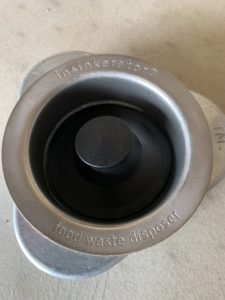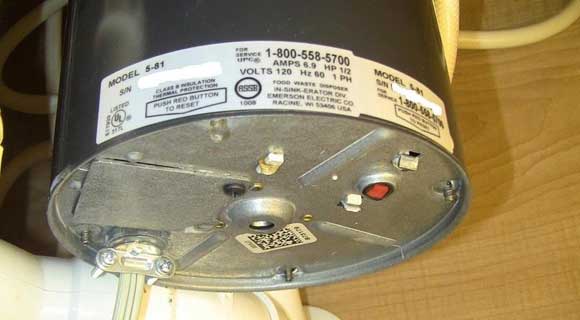Handy Techniques for Repairing a Dripping Garbage Disposal
Handy Techniques for Repairing a Dripping Garbage Disposal
Blog Article
This article which follows involving Tips on Fixing a Leaking Garbage Disposal is relatively engaging. Don't miss out on it.

Garbage disposals are crucial kitchen home appliances that aid in throwing away food waste effectively. Nevertheless, a leaking garbage disposal can be an irritating and messy trouble to handle. Thankfully, many leaks can be taken care of conveniently with a few simple steps. In this write-up, we will certainly talk about how to repair a dripping waste disposal unit efficiently.
Introduction
Waste disposal unit are set up under kitchen area sinks and are created to shred food waste into smaller pieces, allowing it to pass through the pipes system conveniently. While these devices are normally trustworthy, leakages can take place in time due to wear and tear, loosened connections, or damages to the unit.
Step-by-Step Guide to Dealing With a Dripping Waste Disposal Unit
Switch off the Power
Prior to trying any repair work, make sure that the power to the garbage disposal device is turned off to prevent the risk of electrical shock.
Find the Leak
Identify the precise place of the leak and establish the cause
Tighten Links
Make use of a wrench to tighten up any kind of loose connections between the disposal device and the pipes system.
Change Seals or Gaskets
If the leak is due to used seals or gaskets, eliminate the old elements and replace them with brand-new ones.
Patching Splits or Holes
For cracks or holes in the disposal unit, use epoxy or a suitable patching material to seal the broken location.
Determining the Resource of the Leak
Before trying to repair a leaking waste disposal unit, it is vital to identify the source of the leakage. This can typically be done via aesthetic examination or by carrying out basic tests.
Visual Examination
Evaluate the waste disposal unit unit very carefully for any type of indicators of water leakage. Pay very close attention to areas around seals, gaskets, and link points.
Checking for Leaks
One means to test for leakages is by running water through the disposal system and looking for any type of noticeable indicators of leakage.
Common Reasons For Leakages in Waste Disposals
Worn Seals and Gaskets
Seals and gaskets play an essential function in protecting against water from leaking out of the garbage disposal. With time, these parts can degrade, leading to leakages around the disposal device.
Loose Connections
The links in between the garbage disposal and the plumbing system can become loosened gradually, triggering water to leak out throughout procedure.
Fractures or Holes in the Disposal Device
Physical damages to the garbage disposal, such as cracks or openings in the real estate, can also lead to leakages.
Tools and Products Needed for Taking Care Of a Leaking Waste Disposal Unit
Prior to beginning the repair service procedure, collect the required tools and materials, including a screwdriver, adjustable wrench, plumbing technician's putty, replacement seals or gaskets, and epoxy or patching product for fixing fractures or holes.
Testing the Garbage Disposal After Repair Service
When the repair service is complete, evaluate the garbage disposal by running water via it to ensure that the leak has actually been settled.
Preventive Upkeep Tips to Avoid Future Leaks
To stop future leakages, it is essential to perform routine upkeep on your garbage disposal. This consists of keeping it tidy, avoiding putting non-food items or difficult things down the disposal, and periodically checking for leaks or other problems.
Conclusion
In conclusion, fixing a dripping waste disposal unit is a relatively straightforward process that can be finished with standard devices and materials. By complying with the steps outlined in this write-up and exercising precautionary maintenance, you can maintain your waste disposal unit in good working condition and prevent costly repair work in the future.
What to Do About a Leaking Garbage Disposal
A leaking garbage disposal often goes unnoticed until you confront a sopping cabinet, a foul-smelling puddle, or an audible drip-drip-drip from the unit. The fix can be frustrating, too, because the leak can stem from a number of components in the system. Fortunately, with a little sleuthing, you can zero in on the leak and—depending on the exact location—stop the icky oozing and repair the component that caused it. Worst case scenario, if it turns out that the garbage disposal must be replaced, installing a new one is a reasonable do-it-yourself task for those with basic plumbing skills. Read on to keep the cash you’d otherwise hand over to a pro.
Prepare to find the leak
Prior to testing the garbage disposal for leaks, unplug it at the wall outlet and turn off the power from the breaker box to prevent electrical shock. Then insert a watertight sink stopper into your sink drain and wipe the unit dry with a clean cloth. In any handy container, mix a few drops of food coloring into a few cups of water, and pour the dyed water onto the sink stopper to help you locate the leak.
Investigate the source
the top, where the disposal meets the sink drain the side, where the dishwasher hose or main drain pipe connects to the disposal or the bottom of the unit Inspect each of these locations while gliding a light-colored rag over the unit; the dyed water will readily show on the rag and reveal the location of the leak. If a leak isn’t immediately apparent, remove the sink stopper and pour a few more cups of dyed water down the sink drain, then check for leaks again. Leaks near the top of the unit are more likely to show themselves while the sink is plugged, while side and bottom leaks are more noticeable while the sink is unplugged.
The metal sink flange that sits directly inside the sink drain is typically sealed around the top with plumber’s putty (a clay-like sealant) and then secured from under the sink with bolts. If the plumber’s putty deteriorates, or the bolts loosen, the flange can no longer form a watertight seal between the sink drain and the disposal—which could cause a leak at the top of the unit.
To reseal the leaky flange, you must first detach the garbage disposal. Start by loosening the screws securing the main drain pipe to the disposal, then loosen the screws in the metal clamp securing the dishwasher hose to the disposal and detach the drain pipe and dishwasher hose from the disposal. Loosen the screws in the mounting ring that connects the disposal to the metal mounting assembly beneath the sink, then pull down the disposal and carefully set it on a clean, dry surface. Loosen the bolts in the mounting assembly with a wrench, then pull down the mounting assembly and set it near the disposal.

Hopefully you liked our piece about Garbage Disposal Leaking From Bottom. Thank you so much for spending some time to browse our blog post. Sharing is caring. Helping people is fun. We appreciate reading our article about How to fix a pretty consistent leak from my garbage disposal.
Schedule Appointment Report this page